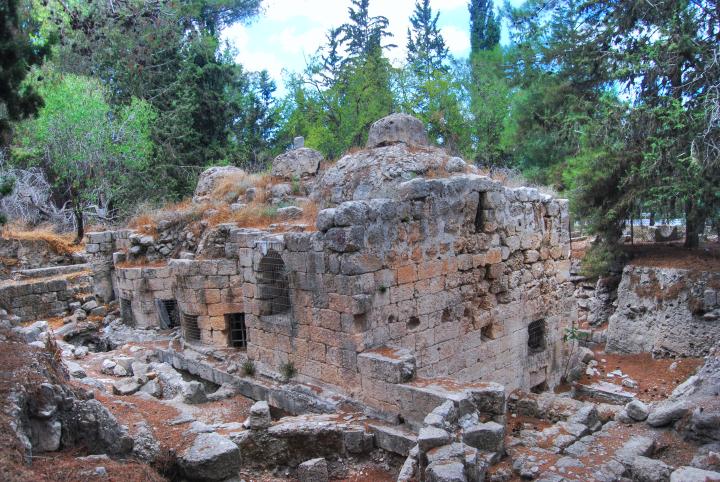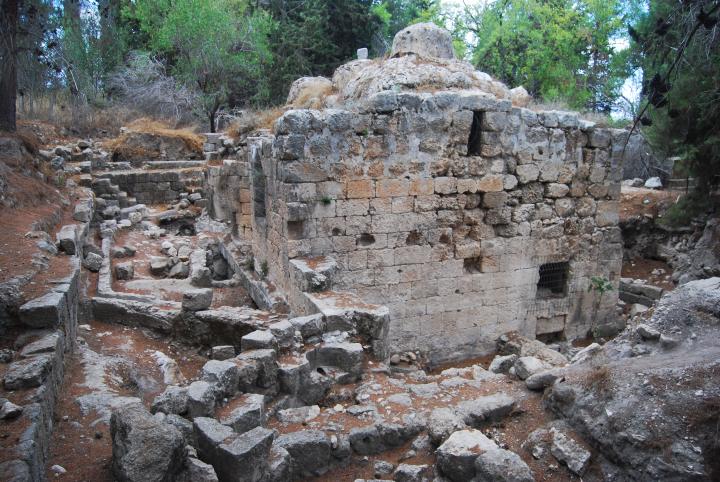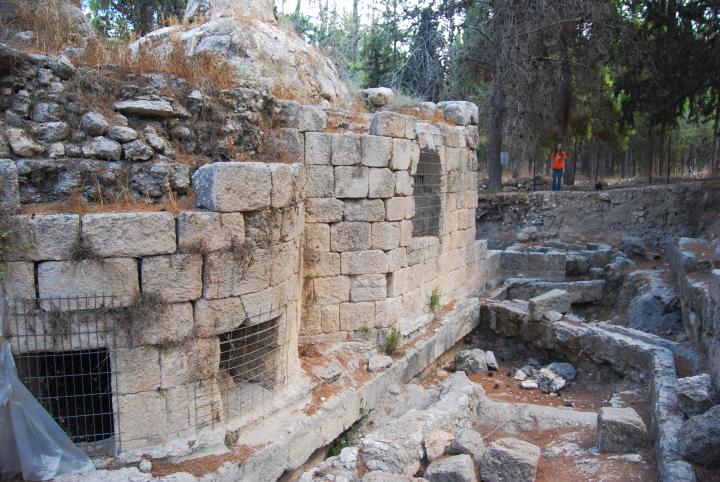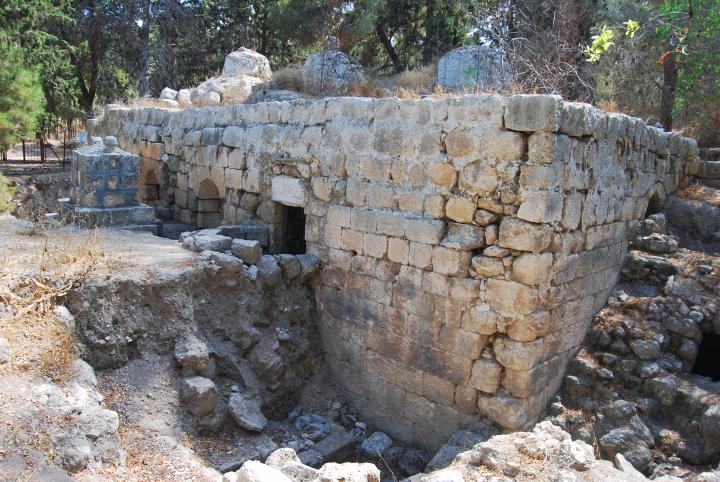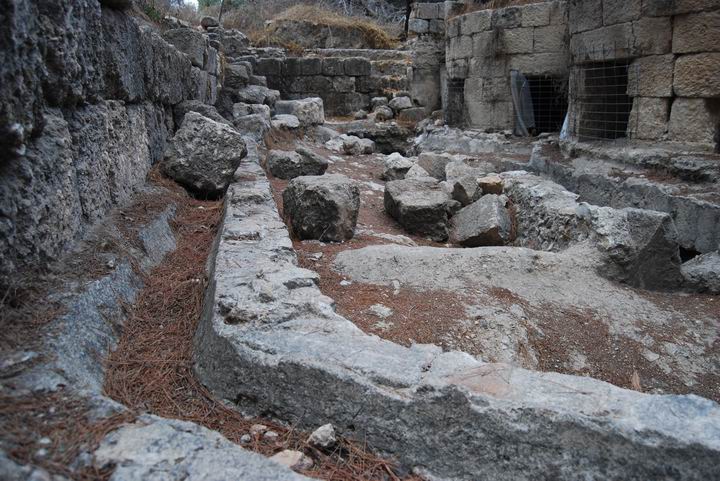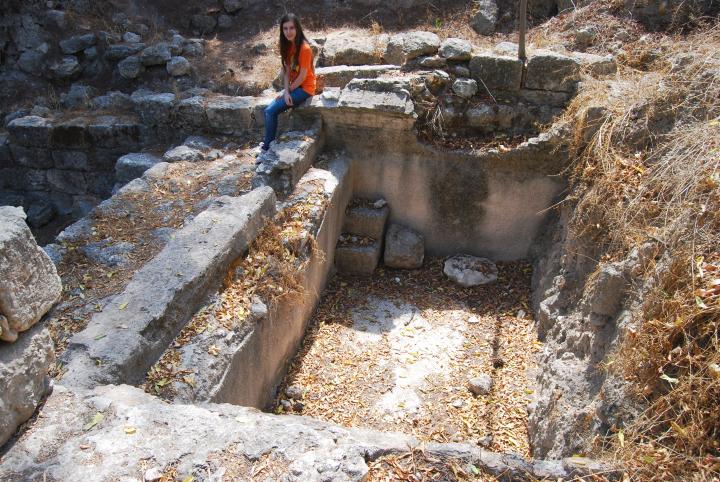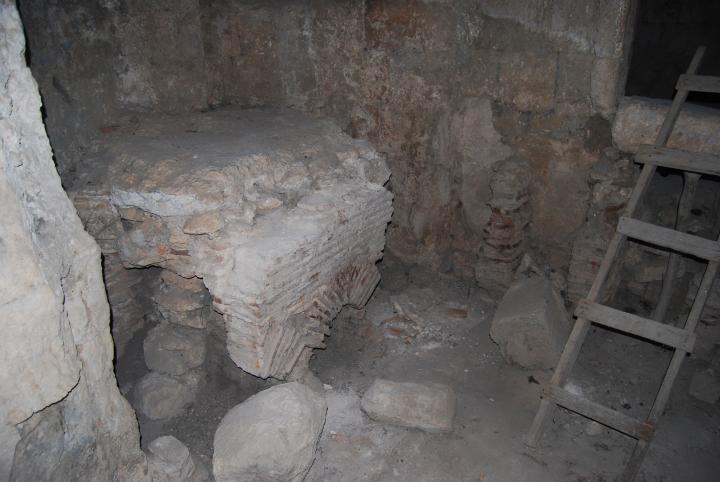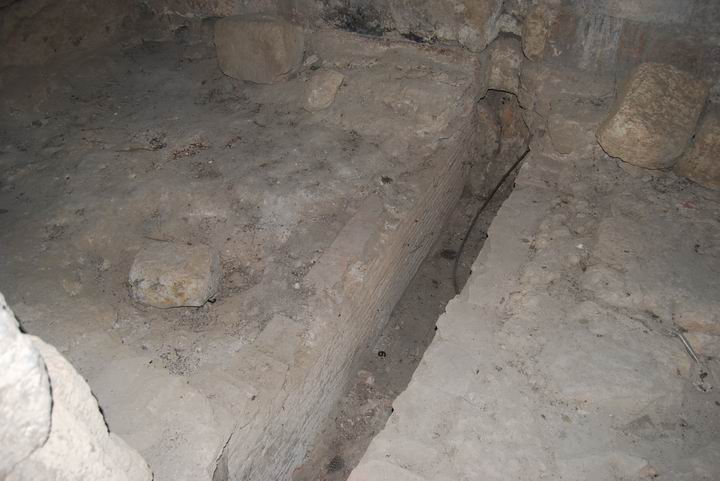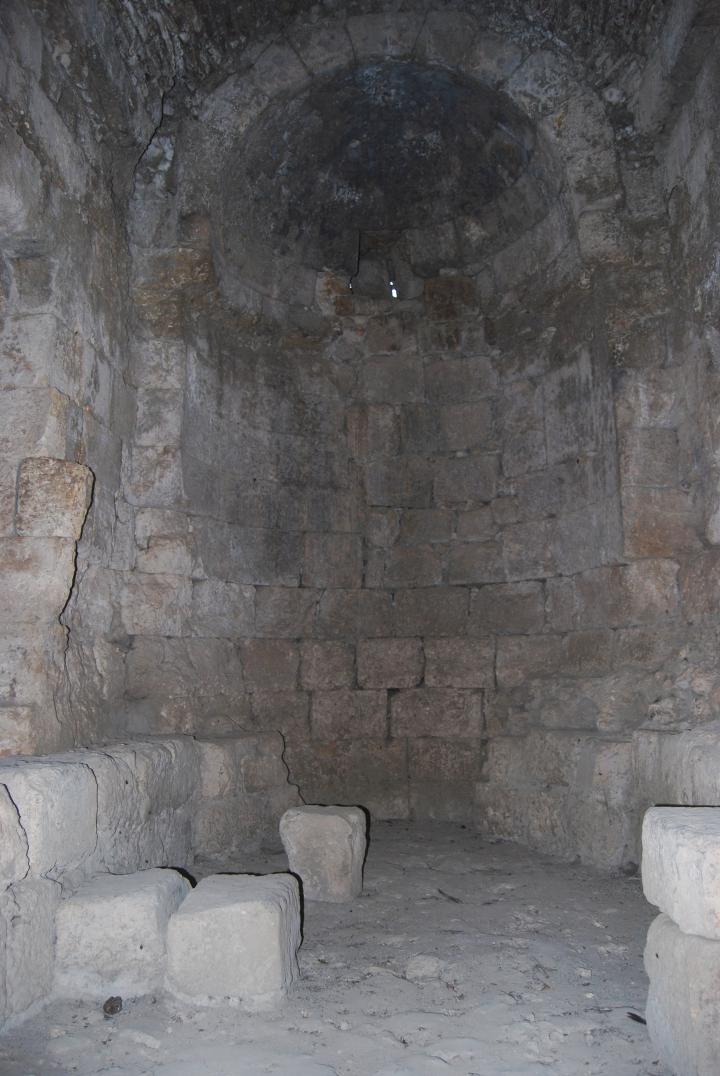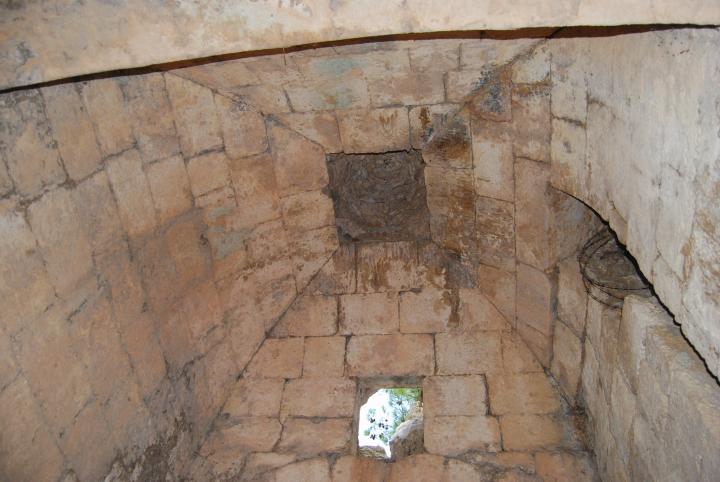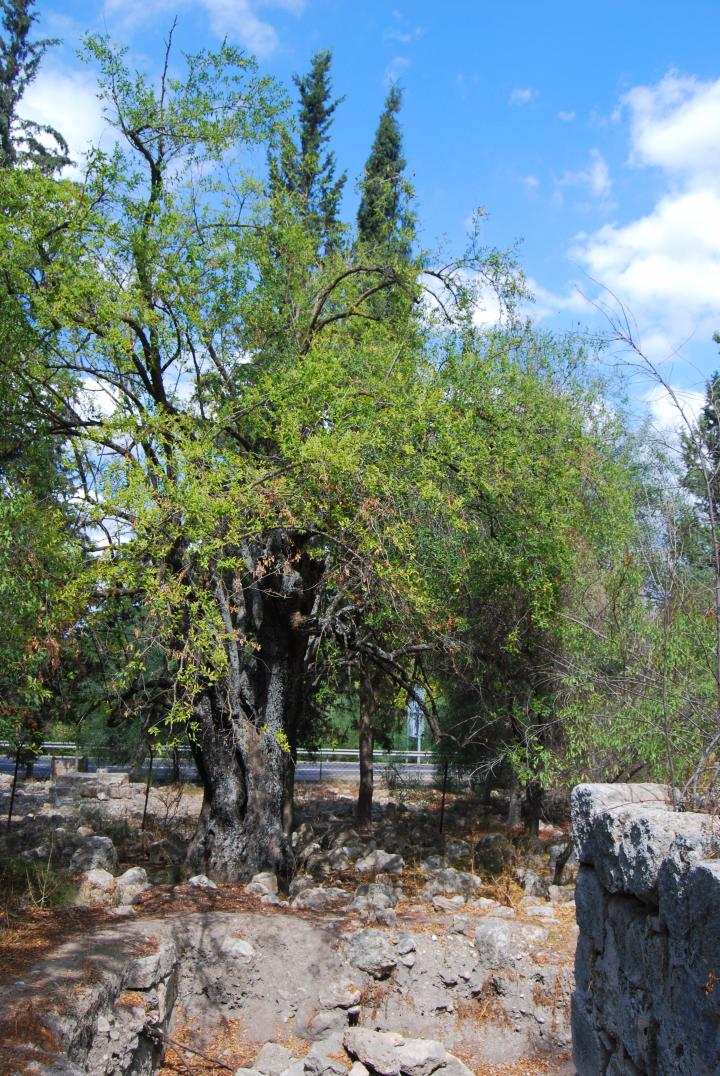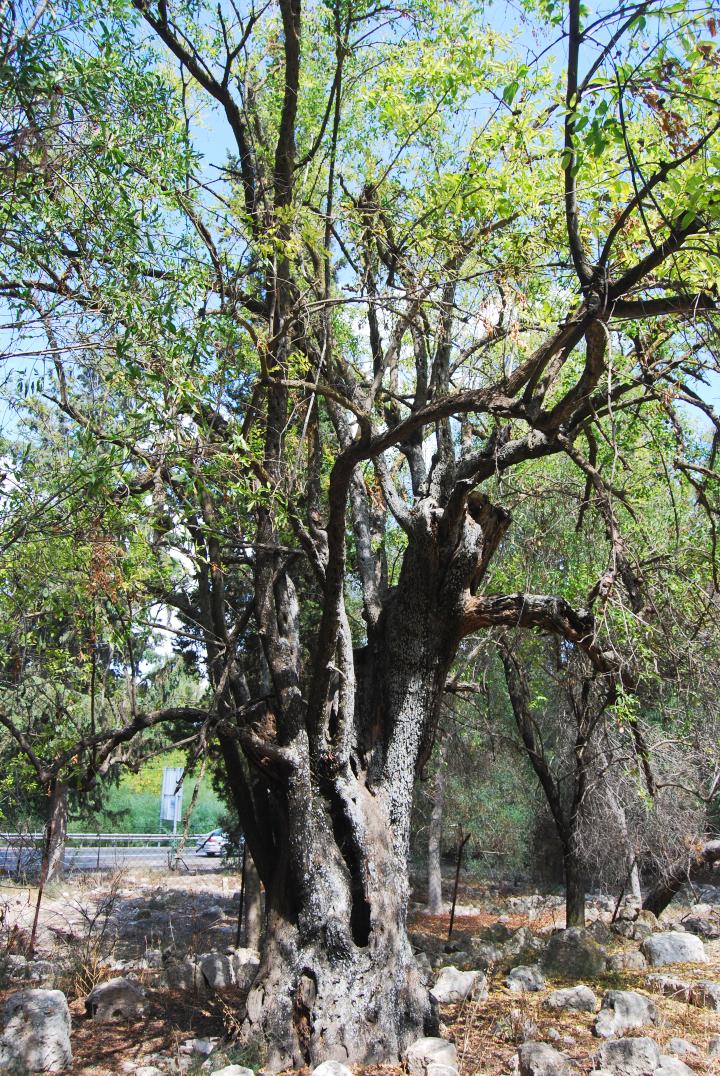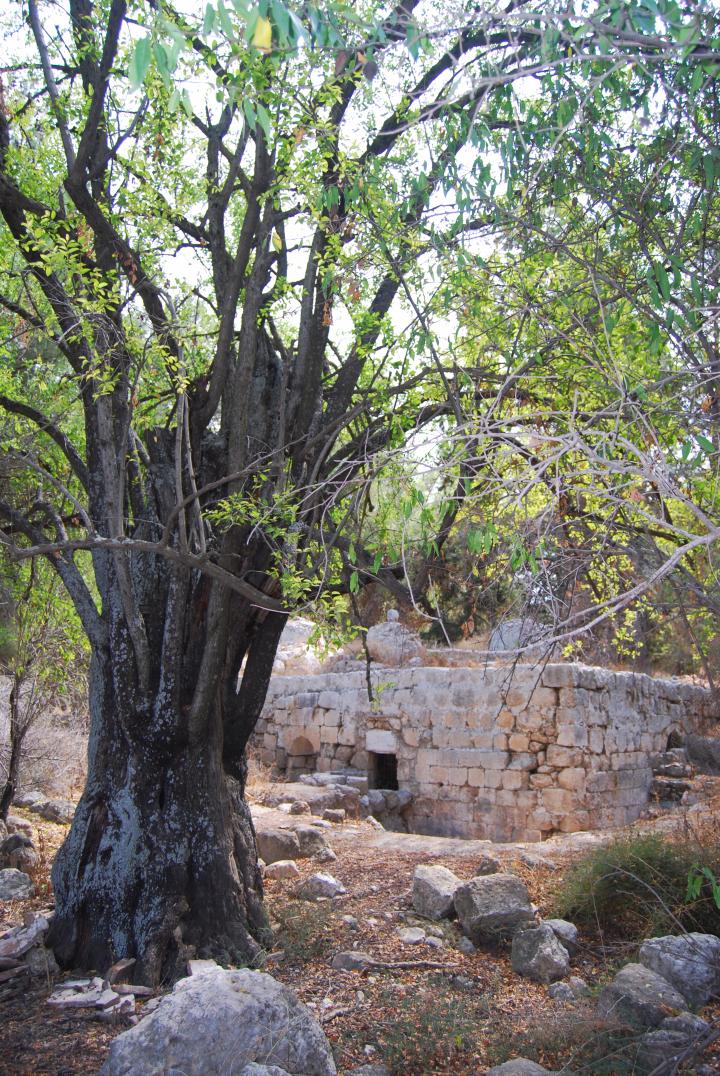A well preserved 3rd century AD structure, located inside the Arabic cemetery in Emmaus. It served as the Roman city’s bath.
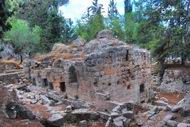
Home > Sites > Judea > Emmaus (Nikopolis) > Roman Bath
Contents:
Overview
Map
History
Photos
* Exterior
* Canals
* Interior water
* Interior rooms
* Ancient tree
Etymology
Links
Overview:
In the center of the Arabic cemetery in Emmaus stands a four-cape structure which was named by the Arabs as Sheik-Ubaidah. The structure is half buried inside the ground. The excavations revealed a well preserved 3rd century AD Roman bath which served as the city’s central bath house.
The bath complex is an excellent example of Roman bath architecture and engineering. The complex consists of several interconnected rooms and chambers, including a caldarium (hot room), tepidarium (warm room), and frigidarium (cold room). The bath also featured a hypocaust system, which allowed for hot air to be circulated under the floors and walls, providing heating for the rooms.
Map / Aerial view:
The structure is located inside the ancient Arabic cemetery, on the western edge of the Ayalon (Canada) park. It is accessed by a path which is entered either from the main road from Latrun junction, or from the Ayalon park.
An aerial photo of the area is seen below, indicating the major points of interest.
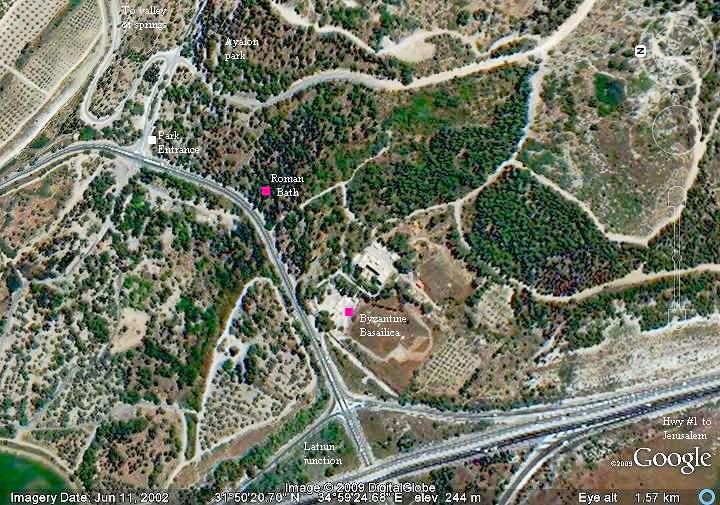
History:
- Roman period
In 221/223 AD Emmaus is raised to the level of a Roman City and renamed Nikopolis (City of Victory in Greek). The structure was built at this time and served the Roman city as its central bath.
- Byzantine period
In 498 AD the structure was damaged by an earthquake, but later repaired. It was also used as a storehouse for wine and oil.
- Arab conquest
Emmaus and the Holy Land were conquered from the Byzantines in 634 AD. The chief military commander of the Muslim armies, Abu Ubaidah ibn al-Jarrah, was the hero of the battles against the Byzantines. He died in the great plague of 639, which also devastated Emmaus and caused the city’s decline. In the 13th century the structure was converted to a shrine and named “Sheik Ubaidah”, honoring the great Muslim commander.
- Modern period
The Emmaus Roman bath was discovered in the 19th century and underwent extensive excavation and restoration work in the 1990s. Today, visitors can explore the site and see the remains of the bath complex, including the original Roman tiles and mosaics that decorate the walls and floors. It is an important historical and cultural site that offers insight into the sophisticated engineering and architectural skills of the ancient Romans. It also provides a glimpse into daily life during the Roman period in the region.
Photos:
(a) Exterior:
The structure of the Roman bath is well preserved and its walls and roof are intact. It consists of four rooms, each covered by a caped dome. The structure is oriented north-south, with the water channels entering from the east side. The photo below shows the view of the Roman bath from the north-east side.
Click on the photos to view in higher resolution…
Another view of the northern side is seen below. The water canals that fed the water to the baths are seen on the left (east) side. The water supply may have included hot water from Emmaus warm springs.
The south-east side of the structure is seen below. Note that due to safety hazards you should stay outside the fence (where Amit is seen standing) and avoid entering the structure.
Another view, from the south-west side, is seen below. A tomb is seen adjacent to the wall, and many others are located around the site.
(b) Water system:
Around the structure are water canals that fed the bath house using an aqueduct. The water supply may have collected the water from the nearby cold springs (fetched by aqueducts from the valley of springs) and hot water springs (from Emmaus hot water spring).
An outside pool is located on the south-east side.
(c) Interior water supply:
Inside the structure are four connected rooms. The water aqueduct enters the structure through the canal seen in the photo below.
In the southern room is a brick based stove which warmed the waters inside the bath, using the Hypocaust method (under floor heating system, based on hot air which was pumped under the floor and heated the waters) .
This system may have been added at a later stage, after the warm water supply from Emmaus hot waters springs may have been discontinued due to the damages of an earthquake. The location of that warm spring is not known.
The rooms were connected with under floor canals, based on ceramic tiles.
(d) Interior rooms:
A view of one of the rooms is seen below.
The photo below shows the ceiling of one of the four rooms. The cape above it seals the hole in the center.
(e) Ancient tree:
In the front of the bath house stands an old multi-branch Arabian Jujube tree ( “sheisaf matsui” in Hebrew). This tree is common in most of the Muslim cemeteries, since it is the only tree species that is regarded by Muslims as holy and sacred, and is mentioned twice in the Quran (LIII: 1318; LVI: 2832). It had medical and commercial uses as well.
One of the Christian traditions is that the Jesus crown of thorns was twisted from twigs of the bush, and thus the bush is also called “Ziziphus spina-christi” which means: “Christ Thorn”. (Matthew 27: 29: “And when they had platted a crown of thorns, they put it upon his head…”). Since this tree is rare in the vicinity of Jerusalem, scholars suggest other candidates for the source of the crown.
Another view of the tree, with the structure behind it.
Etymology (behind the name):
- Ham – warm in Hebrew.
- Hammat/Hammath – the Hebrew name of the city, based on its hot springs.
- Emmaus – the name of the city in Greek, based on the Hebrew name, and means hot springs. Another spa city, called “Emmaus of Galilee” , is located near Tiberias.
Roman bath terms –
- Hypocaust – hot air, under floor, Roman bath warming system. Hypo – under; Cayen – to put on fire.
- Calidarium – hot water bath
- Frigidarium – cold water bath
Links:
* External links:
- Park Canada (Ayalon) (in Hebrew)
* Other BibleWalks web pages of Emmaus:
- Emmaus overview
- The Churches of Emmaus
- Valley of springs
- Hasmonean fortress
- Emmaus winepresses
- Earthquakes in the Holy Land
* Other sites:
BibleWalks.com – exploring the sites of the Holy Land
Emmaus Churches<<<—previous site—<<< All Sites >>>— next Judea site —>>> Valley of Springs
This page was last updated on Apr 6, 2023 (new overview)
Sponsored links:
